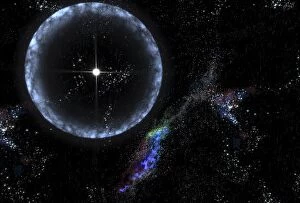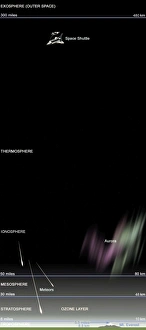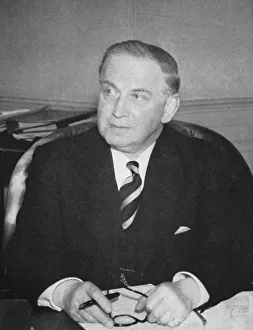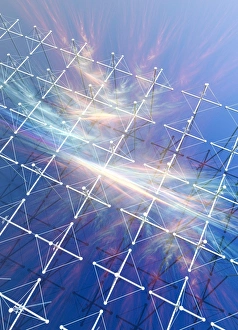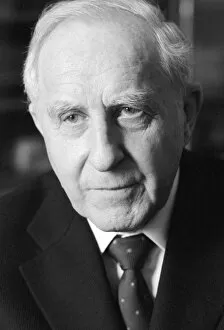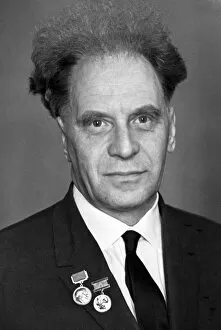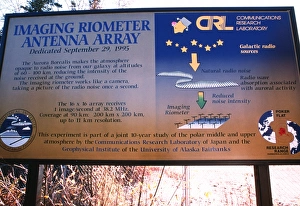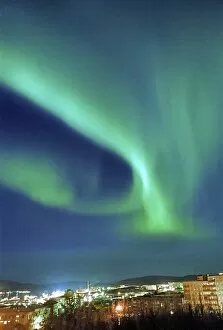Ionosphere Collection
The mesmerizing ionosphere, a celestial phenomenon that captivates our senses and ignites our curiosity
All Professionally Made to Order for Quick Shipping
The mesmerizing ionosphere, a celestial phenomenon that captivates our senses and ignites our curiosity. From the enchanting dance of the Northern Lights close to Yellowknife, Canada, to the ethereal Aurora borealis over Skagsanden beach in Norway, this atmospheric spectacle never fails to leave us in awe. Edward Victor Appleton (1892-1965), an English physicist, made groundbreaking contributions to our understanding of the ionosphere. His research paved the way for comprehending how this layer interacts with electromagnetic waves and influences radio communication. As we gaze upon the Northern lights painting vibrant hues across distant mountains in Iceland, we are reminded of Earth's intricate atmosphere. A diagram showcasing its transparency to different types of radiation reveals its role as a shield against harmful cosmic rays while allowing visible light and other essential wavelengths through. Intriguingly, even beyond our planet's boundaries lies another fascinating connection to the ionosphere. The neutron star SGR 1806-20 produces gamma ray flares that reach unimaginable intensities—a testament to nature's immense power and complexity. Artistic depictions bring forth innovative scientific endeavors like HaRP arrays for auroral research. These captivating artworks illustrate humanity's relentless pursuit of unraveling mysteries within Earth's uppermost layers—an endeavor shared by Vladimir Migulin, a Soviet physicist who contributed significantly to advancing our knowledge about this enigmatic realm. The ionosphere serves as a bridge between Earth and space—a delicate balance between science and wonderment. It reminds us that there is still much left unexplored beyond what meets the eye—inviting us on an endless journey towards discovery and enlightenment.







